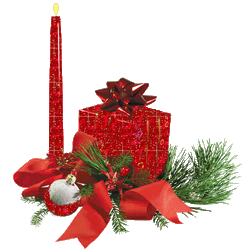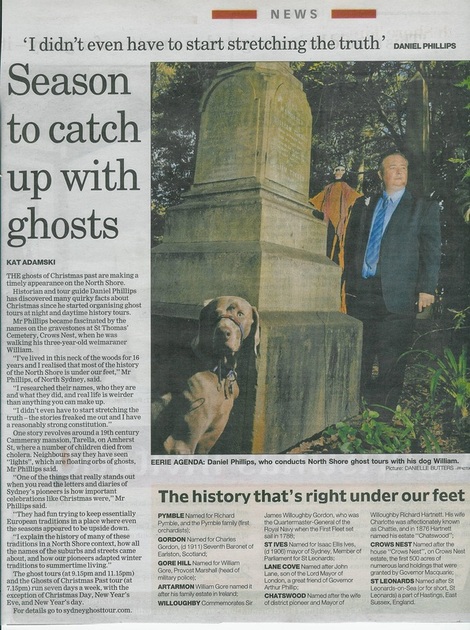 "Season to catch up with Ghosts" by Kat Adamski, North Shore Times THE ghosts of Christmas past are making a timely appearance on the North Shore. Historian and tour guide Daniel Phillips has discovered many quirky facts about Christmas since he started organising daytime history tours and Ghost tours at night. Mr Phillips became fascinated by the names on the gravestones at St Thomas Cemetery in Crows Nest, when he was walking his three year old Weimaraner dog William. "I've lived in this nick of the woods for 16 years and I realised that most of the history of the North shore is here under our feet" Mr Phillips, of North Sydney, said. "I researched their names, who they are, and what they did, and real life is always weirder than anything you can make up. I didn't even have to start stretching the truth ( for a good story) - the stories I found freaked me out, and I have a reasonably strong constitution". One story revolves around a 19th century Cammeray Mansion called Tarella, on Amherst Street, where a number of children died of Cholera. Neighbours have reported seing "lights" which are floating orbs of Ghosts , Mr Phillips said. "One of the things that really stands out when you read the letters and diaries of Sydney's pioneers is how important celebrations like Christmas were" Mr Phillips said. "They had fun trying to keep essentially European traditions in a place where even the seasons appeared to be upside down" "I explain the history of many of these traditions in a north shore context, how all of the street and suburbs names came about, and how our pioneers adapted winter traditions to summertime living" The ghost tours ( at 9.15pm and 11.15pm) and the Ghost of Christmas Past tour ( at 7.15pm) run 7 days a weekwith the exception of Christmas day, New Years Eve and New Years Day. For Details go to sydneyghosttour.com The history that's right under our feet:
4 Comments
|
Author
|



 RSS Feed
RSS Feed